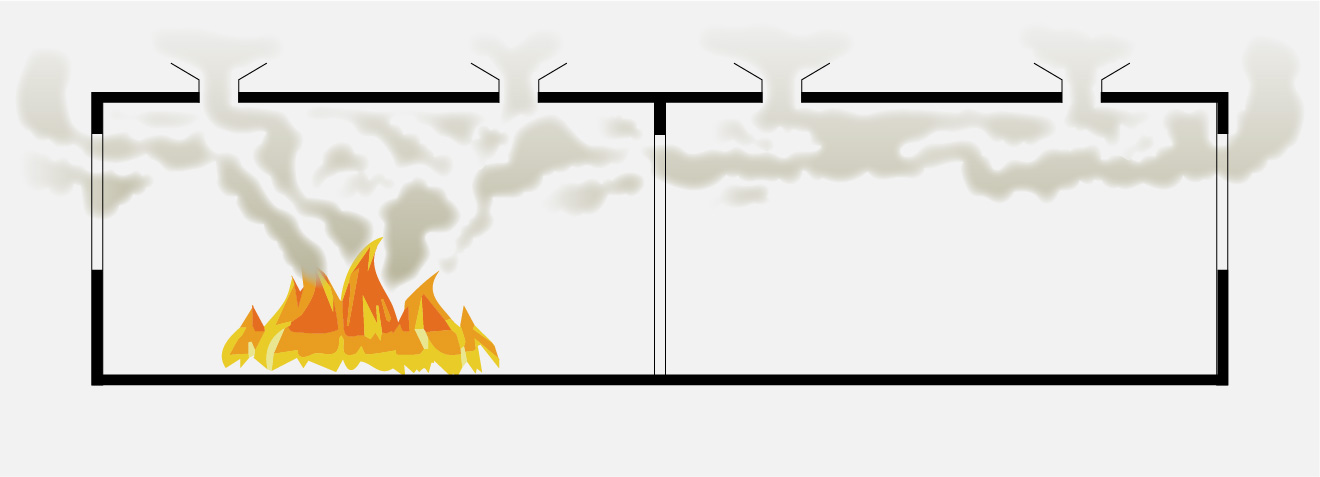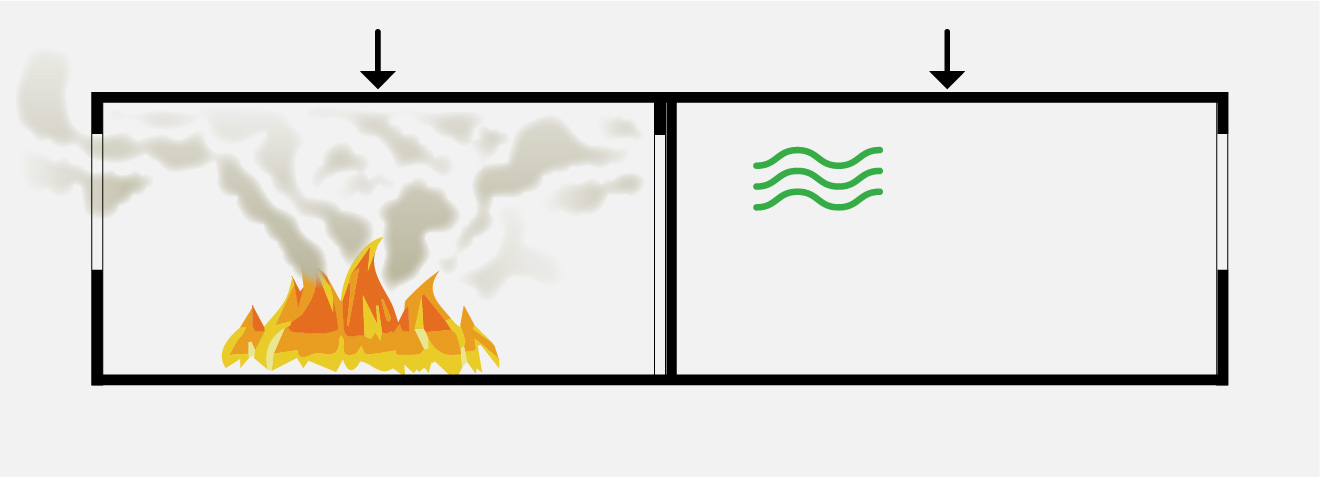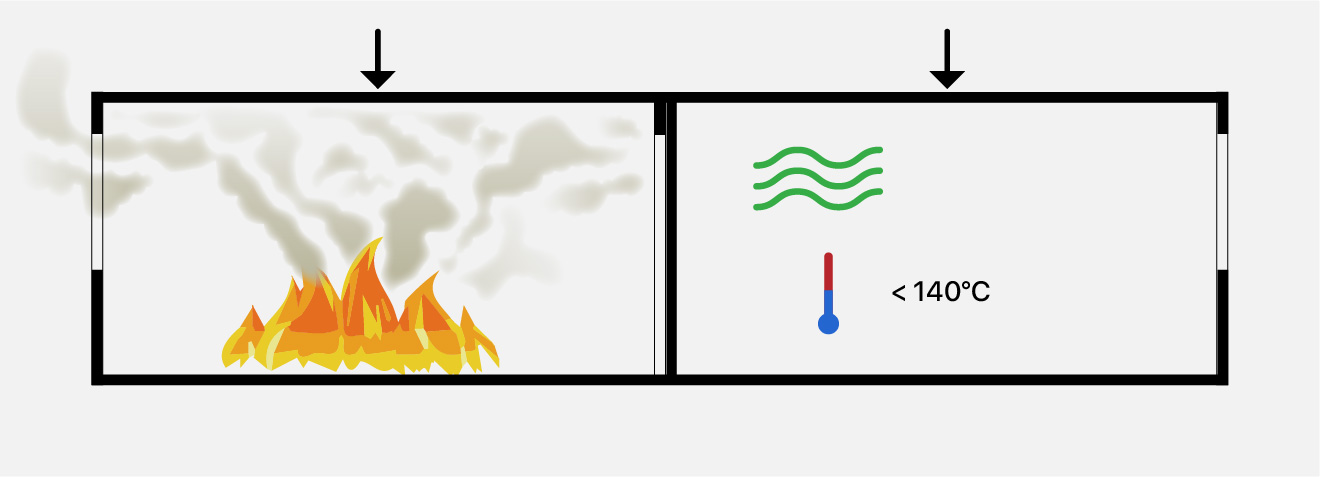What is the fire resistance?
The concept of fire resistance is defined, in the context of italian’s legislation, such as the attitude of an element to retain, according to a predetermined temperature program and for a determined time, in whole or in part, the following requirements:
– The stability or load-bearing capacity: (R) the ability of a building element to keep the mechanical strength under the action of the fire (DM Int. 30/11/1983) the structure or of a steel member to withstand the specific actions during the relevant fire exposure (Eurocodes)
-The Tightness or integrity: (E) And the ability of an element to not let pass or produce, when exposed to fire on one side, fire, vapors or hot gases on the unexposed side (DM lnt. 30/11 /1983)
capacity of the members of separation to prevent the passage of hot gases or the ignition beyond the exposed surface, during the relevant fire exposure (Eurocodes)
– Thermal insulation: (I) The aptitude of an element to reduce, within a given limit, the transmission of heat (DMlnt. 30/11/1983) capacity of a member of separation to prevent excessive transmission of heat (Eurocodes)

With the symbol R identifies a constructive element that, in the event of a fire, must retain only stability (E.g. a beam or pillar isolated)

The RE symbol identifies a constructive element that must maintain both stability and sealing (E.g. a wall or floor that has a separation function and for which it is not necessary to limit the temperature rise on the face of the non-element exposed to fire)

The REI symbol identifies a constructive element that must maintain stability, seal and isolation (as in the previous example when also wanting to limit the temperature rise on the face of the non-exposed element)